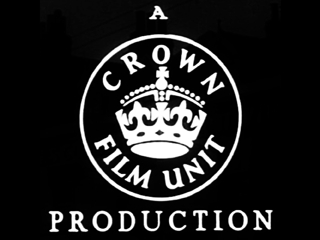Social Realism
- Nov 19, 2018
- 4 min read
Social Realism is a film genre which focuses on giving the audience a true indication of what life is like. Filmmakers such as Ken Loach, Shane Meadows and Mike Leigh are well known for their role in directing social realism films and TV series'. Social Realist films originated in the 1950s/1960s, however in terms of their form and style, early social realism films were heavily influenced by the British documentary tradition of the 1930s. Common themes of early social realism include: social injustice, racial injustice, economic hardship and representing working class as heroes
When this genre first started out, social realism films often represented working class characters living through a struggle and generally exhibit them as a protagonist. Often, the directors of social realistic films wanted to depict a type of social injustice, such as: economic hardship, discrimination or political injustice. In Saturday night, Sunday morning (1960) the director, Karel Reisz, choose to display the unethical life story of a factory worker and how he lived through deception, affairs and abortions, but was still displayed as a heroic character.
Social realism films today focus on issues alive in a modern society which are represented by different ideologies. Themes such as money, drugs, prostitution and sex are quite usual in modern contemporary social realism films as well as class, religion and political views. These themes are very popular today but not all were involved in the early social realism storylines and films. Furthermore, Social Realism as a genre has developed a lot in other places other than its themes since it first started. Examples of this are it does not just deal with British stoicism but also characters’ emotions; It has also incorporated more feel-good elements since the 90s. Moreover, the soundtrack is also moderately more significant in contemporary social realism films and the middle class is not the only considered audience.
Social realist films are known to include the following:
· Location shooting (not in a studio) – Using locations rather than studios make the film closer to real life – it gives a documentary feel which emphasizes the realistic atmosphere.
· Wide angle shots – A lot of wide angle shots provides the audience with a good understanding of what’s going on and where the setting is.
· Unknown/non-professional actors – British social realism films tend to use non-professional/unknown actor to add to the realistic look.
· Semi-improvised scripts – Semi-improvised scripts are often use in this genre in order to achieve ‘realistic’ dialogue and true to real life conversations.
· Humor and Gravity – British social realism films deal with everyday issues within the working class such as unemployment, poverty, drugs and gang culture with a level of gravity but also incorporates some humor into the film.
There seems to be many companies that produced social realism films. In the earlier years of social realism there doesn’t seem to have been a main production company, however out of many, to me these three stand out:
- During World War II, The Crown Film Unit made films for the general public in Britain and abroad. Its output included short information and documentary films as well as some straight drama productions. They produced films such as Lilli Marlene (1950) and Listen to Britain (1942).
- Established in the late 1950s, The film production company Woodfall were also the force behind many early social realism films. The film version of Look Back In Anger, directed by Richardson, was released in 1959. Following it, Woodfall produced several of the most significant British films of the 1960s that transformed the British cinema into the most dynamic in the world.
- As for later Social Realism films, Film4 has been responsible for backing a large number of films made in the UK. The company’s first production was Walter, a film about a man who attempts to adapt to the conditions of “normal” life with a learning disability, which was released in 1982. Many opinions and reviews were polarised by this controversial film as the company had never done one like it before.
This is England is a very good example of a more modern social realism film. The use of unknown and untrained actors is a typical convention of social realism film as it furthermore makes it more realistic and relatable to the audience. This was a debut feature for many actors in the film, including male lead Thomas Turgoose. Most modern social realism films also depict a ‘coming of age’ story which is what This is England done with the character of Shaun. Many actors used for the film were not of a high status in the industry and depict similar lives to their characters in the film. For example, Thomas (who plays Shaun) before filming had been expelled from a number of schools, grew up in a working-class background and even demanded £5 to turn up to the audition – this already shows a likeness to his character. This is England can somewhat be a true representation of British working class of this time. One of the first scenes of the movie shows Shaun running through the streets on the way to school. The shots show terraced houses and what seems like a deprived council estate community makes the movie more realistic and also provides a sense of nostalgia to people who grew up in the 80s.














This is a really interesting read and the information that you included is really broad and allows me to gain a good understanding of the genre.